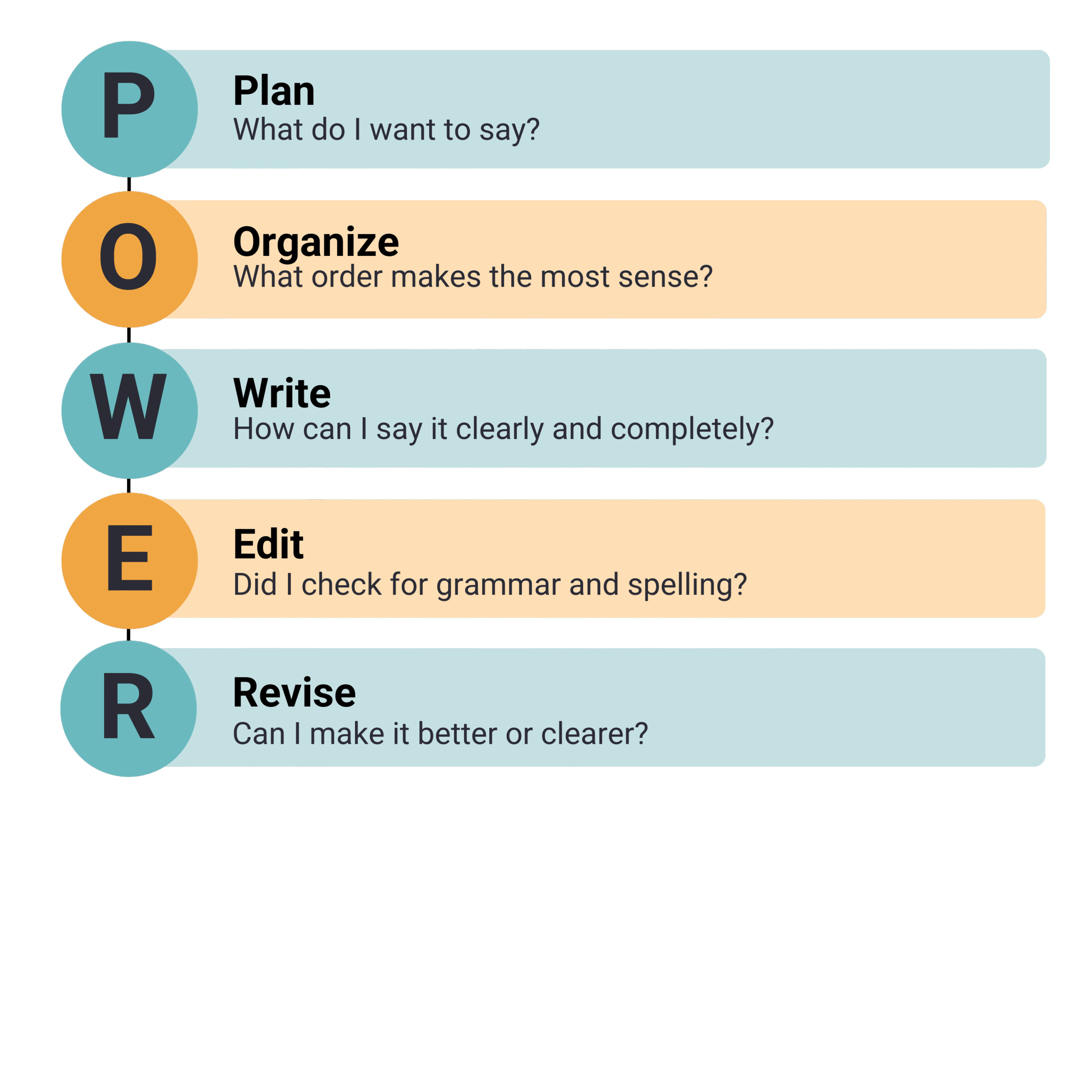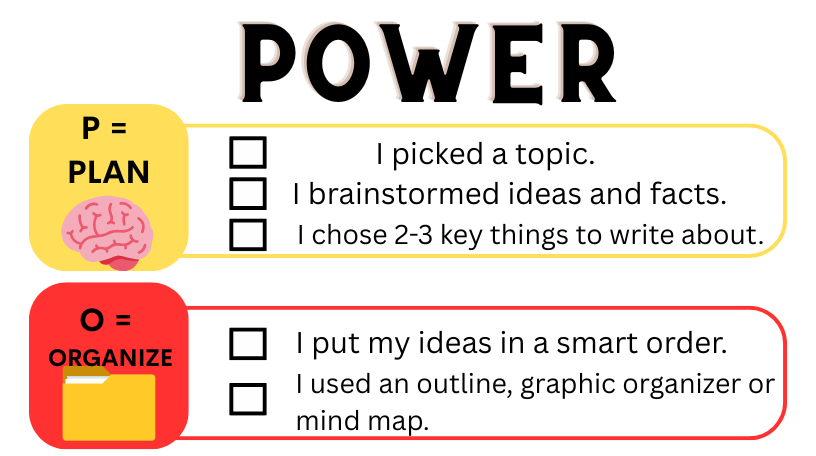Plan, Organize, Write, Edit, Revise (POWER) Strategy

Strategy Parameters
- Genres: Persuasive, Narrative, Informational
- Grade Levels: 6-12
- Writing Process Stage: Planning, Drafting, Editing, Revising
At-A-Glance
This structured writing strategy assists students by breaking the writing process into manageable steps, reinforcing learned skills, and using a memorable acronym to guide revision and self-monitoring, which builds both confidence and independence.

Overview
The strategy provides a clear and systematic approach to writing, directly supporting students’ executive functioning skills such as effective planning and self-monitoring during the drafting and revision stages. By offering a reliable guidepost in the form of a memorable acronym, students gain independence as they consistently improve the organization, clarity, and coherence of their writing across multiple drafts. Furthermore, its alignment with research-based practices makes it particularly valuable for educators focused on accessibility and differentiated support for students, including those with learning disabilities.
Purpose and Benefits
This strategy helps students:
-
View the writing process as a series of achievable, structured steps rather than a single, intimidating task.
-
Internalize and utilize previously taught writing and organizational concepts through consistent reinforcement.
-
Develop stronger executive functioning skills, including proactive planning and effective self-monitoring during work.
-
Observe tangible improvements in the clarity and coherence of their work across successive drafts.
-
Foster a sense of self-efficacy and independence by providing a reliable tool for self-guided revision.
Why It's Effective
-
Scaffolding and Chunking: It effectively breaks down the complexity of writing into smaller, manageable components, reducing student frustration and cognitive load.
-
Executive Function Support: The use of an acronym and clear steps directly supports the development of crucial skills like planning, organization, and self-regulation.
-
Memory Cue: The memorable acronym acts as an instant, portable checklist during the revision stage, promoting the use of strategic thinking.
-
Positive Reinforcement: Seeing observable improvement in organization and clarity with each draft reinforces the process and substantially builds confidence.
-
Research Alignment: Its basis in evidence-based practices ensures it meets the specific needs for accessibility and differentiated instruction in inclusive classrooms.
Downloads




